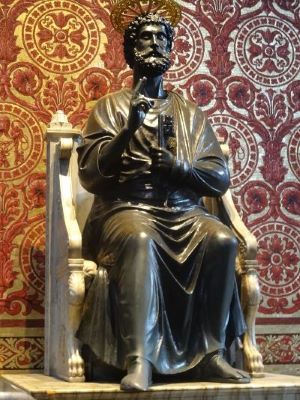The Quirinalia and the boat of St. Peter: origins and tradition
The Quirinale and the boat of St. Peter, what relationship do they have? Here's the explanation.
The Quirinalia: ancient origins
In ancient Rome, Numa Pompilio, the city's second king, established the Quirinalia: a festival initially celebrated on February 17 in honor of the god Quirinus, at an altar located on what we now call Quirinal Hill.
During the celebration the roasting of spelt, a very common food of the time, was celebrated. The offerings to the god Romolo-Quirino followed the Latin-Etruscan rite. Initially identified with Mars, Quirinus was later associated directly with Romulus, founder of Rome.
Christianity and the Feast of Saints Peter and Paul
The Christians were inspired by this feast to celebrate the two apostles Peter and Paul, considered the founders of the new Christian Rome. This transformation is one of the oldest examples of Christianization of a pagan festival.
St. Peter in the Venetian tradition
In Veneto, and therefore also in Verona, St. Peter is celebrated next to St. John the Baptist, on June 24.
John and Peter thus become the saints of the solstice, a symbolic moment in which the second half of the agricultural year begins.
St. Peter's Boat
According to popular tradition, to predict the weather of the second part of the year, the so-called boat of St. Peter was observed, which formed on the night between June 28 and 29.
The holy fisherman, it is said, blew into the jug of water to help the formation of the boat.
How to make the San Pietro boat
Here is the procedure, still followed today:
- On the evening of June 28, fill a glass pitcher with dew water.
- Add a beaten egg white.
- Place the carafe in the middle of the grass, just before midnight.
- On the morning of the 29th, if a boat with sails has formed, the year will be great.
Otherwise... it remains to be seen!
Very important note: dew water must be collected on the night of San Giovanni.
This explains the link between the two saints and the symbolic passage between pagan festivals, solar calendar and Christian tradition.
Later, Emperor Augustus moved the festival to June 29, the time of the wheat harvest. Here we also insert the figure of Janus, guardian of the solar year, and the twins Romulus and Remus, founders of Rome, were celebrated.
info@guideverona.net
+39 3398875588






